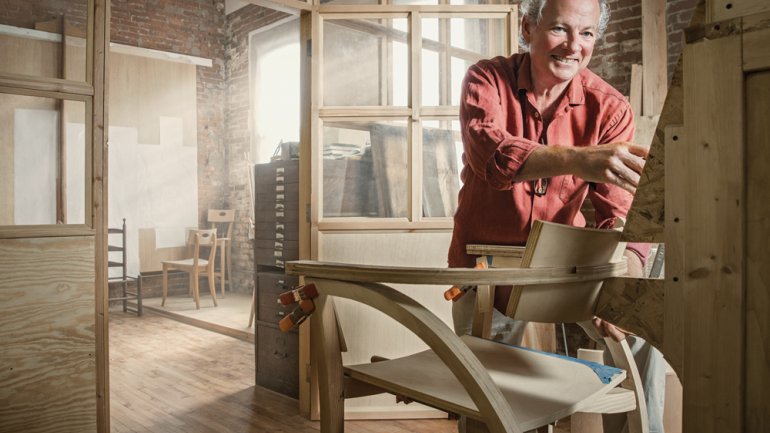Masters: Michael Hurwitz
Masters: Michael Hurwitz
“Keep an open mind, and the rest will take care of itself.” It’s the only advice furniture maker Michael Hurwitz gave his daughter, and it’s the way he lives his life.
Hurwitz has been open to making things for as long as he can remember. In high school, a seminal Smithsonian exhibition – Nakashima, Esherick, Castle, Carpenter, Maloof – ignited his interest in wood. “When I saw that show,” he says, “that just made me weak in the knees.”
He took classes in musical instrument making but soon found it too creatively limiting. But no matter – he was on to the next thing: furniture. At Boston University he learned from two professors with diametrically opposed views. Jere Osgood believed in useful, beautiful furniture that would last a lifetime; Alphonse Mattia pushed for groundbreaking invention. A less broad-minded student could have struggled with the dissonance. But Hurwitz, in his way, blended the approaches; today he is both artist and craftsman, innovator and artisan.
In 1985, six years out of school, he took up a 14-week residency in the Dominican Republic. As David Savage, who has written about Hurwitz’ work, puts it, “He took this opportunity without knowing quite where it would lead.” There, Hurwitz was able for the first time to put aside deadlines, slow down, reflect, and put himself into his work. He realized “it’s not really about designing a piece of furniture so much as it is seeing furniture as a way of life, or seeing an experience as a piece of furniture.” It was a lesson that shapes his work still.
Hurwitz has stayed receptive even amid serious struggle. After the economy crashed in 2008, he saw his business drop off precipitously. “For years,” he says, “there was almost no work.” He found himself unmotivated and lost, unwilling to make furniture that was unlikely to be seen, much less bought. “It was upsetting to feel that I had no job or sense of purpose,” he recalls. Ultimately, things picked up, and Hurwitz regained his joy. “I’m so happy to be alive and working again,” he says.
His latest thrill is collaborating with Martin Puryear, an artist he has always admired, on seating for the expansion of Glenstone, an ambitious contemporary art museum in Potomac, Maryland. It’s the first project he’s making in his new 3,000-square-foot studio, a fresh start in a building he and his wife, artist Mami Kato, purchased a few years ago, renovated as artists’ workspaces, and finally moved into this year.
Incorporating all of his experiences, the pain and the bliss, Hurwitz approaches each new piece of furniture as a blank slate. “I used to think sort of consciously … what if this were my last piece?” he says. “I just try to make it the best piece that I can.”

